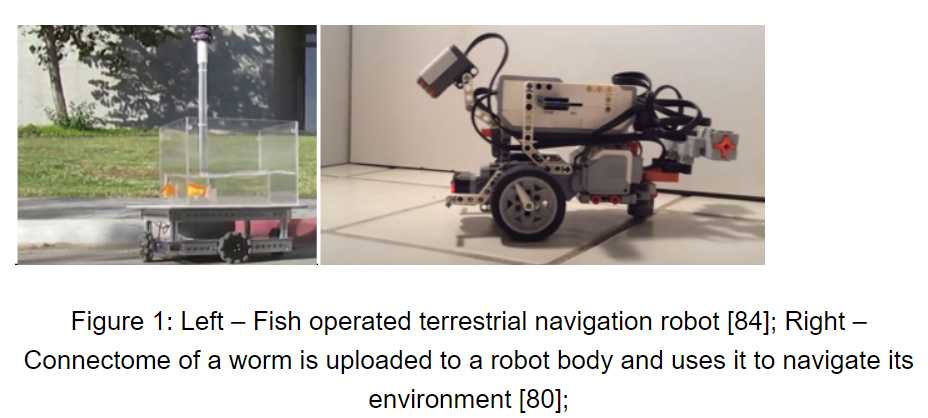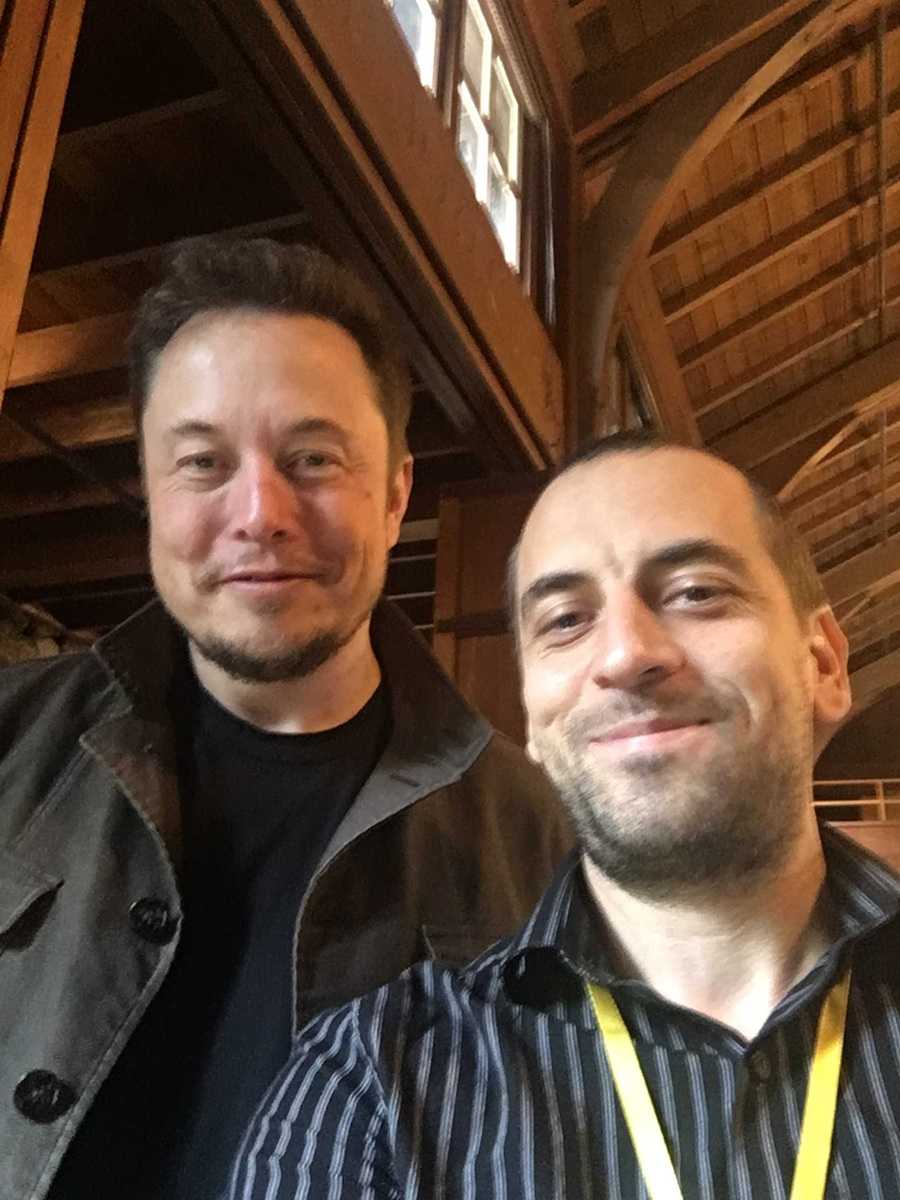Dr. Roman Yampolskiy claims he has found ways to Escape the simulation. There are ways humans could try to hack their way out of the wrong reality and enter the baseline reality. However, the consequences of such an escape plan are also unknown.
Dr. Yampolskiy is a highly esteemed figure in the field of artificial intelligence, specializing in AI safety. He holds a tenured position as a Professor of Computer Science at the University of Louisville, where he is also the Founding Director of the Cyber Security Lab—a globally recognized hub for research in computer security, biometrics, and forensics.
His research primarily focuses on ensuring that the rapid development of AI remains safe and beneficial for humanity. Dr. Yampolskiy is a prominent advocate for understanding and addressing the potential risks of advanced artificial intelligence. His work emphasizes developing safeguards to mitigate the risks associated with artificial superintelligence and explores critical topics such as AI consciousness and ethical deployment.
Dr. Yampolskiy is also a prolific author, with numerous journal articles and research papers that have been widely cited in both scientific circles and mainstream media. His insights have been featured in outlets like New Scientist, Science World Magazine, BBC, and MSNBC, underscoring the broad impact and recognition of his contributions to AI safety and ethics.

He suggests that a superintelligent AI could potentially “jailbreak” the simulation, offering a way for us to escape. This idea hinges on the notion that superintelligent AI could identify and exploit flaws in the code of the simulated reality, thereby providing us with a means to transcend it.
The idea that humans might be living in a simulation is actually quite old. French philosopher René Descartes mentioned it in the 17th century. However, the idea became more popular in the science community after Oxford University philosopher Nick Bostrom wrote a detailed article on it in 2003. Bostrom estimated that there’s about a 20 percent chance that we’re living inside a super-advanced alien computer.
Dr. Yampolskiy believes that if we’re living in a simulation, we should be able to find a way to break out of it. Elon Musk thinks there’s a very high chance (more than 99.9999999%) that we’re in a simulation. Yampolskiy looks at examples from video games and ideas from quantum mechanics to show how we might hack our way out.
In his paper, Dr. Yampolskiy argues that if we are in a simulation, can we escape? More formally, the question could be phrased as: Could generally intelligent agents placed in virtual environments jailbreak out of them?
Dr. Yampolskiy discusses why we might want to escape the simulation. He suggests several reasons, such as accessing the “real world” or base reality, which has more knowledge and resources that could lead to major scientific discoveries. In base reality, we could answer big philosophical questions about our origins, consciousness, purpose, and the nature of our creator.
If this world isn’t real, escaping would help us understand our true goals and provide many potential benefits, like controlling superintelligent machines, achieving immortality, and avoiding existential risks. It could also offer wealth, power, and the ability to do more good. Escaping would also give solid proof that we’re living in a simulation.
Dr. Yampolskiy suggests that if we manage to escape the simulation and access the source code of the universe, it might be possible to fix the world at its core, potentially eliminating suffering altogether.
However, if worldwide suffering elimination isn’t possible, escaping the simulation could become an individual’s ethical right to avoid misery. If the simulation is seen as an experiment on conscious beings, it would be unethical, and participants should have the right to leave or seek justice from those running the simulation.
Dr. Yampolskiy proposes that the purpose of life could be to escape the fake world and improve it by removing suffering, helping others find real knowledge, or escaping if they choose. Ultimately, to make a meaningful impact, one would focus on the real world, not the simulated one, because even though we may be in a simulation, our suffering is real.
To make the study more serious, Dr. Yampolskiy chooses to focus only on escape methods related to cybersecurity, like hacking and social engineering, and avoids looking into more alternative or spiritual methods like meditation, psychedelics, dreams, magic, or religious practices.
Dr. Yampolskiy suggests that if we manage to escape the simulation and access the source code of the universe, it might be possible to fix the world at its core, potentially eliminating suffering altogether.
However, if worldwide suffering elimination isn’t possible, escaping… pic.twitter.com/Qz8iNfClVD
— Vicky Verma (@Unexplained2020) January 20, 2025
What Does it Mean to Escape?
Dr. Yampolskiy describes various levels of escape from the simulation, from merely suspecting that we’re in one, to ultimately taking control of the real world, including the simulators.
He imagines a scenario where agents (like humans) begin by not knowing they’re in a simulation but gradually come to suspect it through evidence. Once they identify glitches or inconsistencies in the simulation, they could exploit these to gather information about the real world or even manipulate the simulation itself. Eventually, they might be able to upload their consciousness to the real world, where they could have some control over both the real world and the simulators.
He provides examples like a fish using a robot to navigate on land, or a worm’s brain being uploaded to control a robot. These illustrate how escaping a simulation might involve changing avatars or bodies to adapt to new environments. If the simulation has multiple layers, escape might lead to another simulated world rather than the real one. However, even partial escapes could provide valuable information.
In some cases, one could attempt to escape by creating a new simulation or working with others, possibly even appealing to the simulators for help. The ultimate escape might involve shutting down the simulation itself.
How secure is it against hacking Simulation?
If the simulation is meant to be a “prison” or a controlled environment for dangerous agents, it would likely have strong security features.
On the other hand, a simulation made for entertainment would likely have less security, making it easier to escape. The simulation could even be designed like an “Escape Room” where the goal is to solve puzzles to escape, with the added benefit of identifying those who could escape or develop superintelligence.
Other possibilities for the simulation’s purpose include scientific studies, training, or historical exploration, which might not require top-tier security.
Additionally, the simulation could be focused on generating different experiences for “qualia mining,” where the goal is to produce pleasurable experiences for the simulators. If the simulators are AIs, the simulation might be a byproduct of their thought process as they try to understand human preferences.
Dr. Yampolskiy also suggests two types of simulations: a partial-simulation, where the environment is virtual but non-simulated agents (like us) are immersed, and a full-simulation, where everything, including agents and the environment, is generated. In a partial simulation, simply shutting it down may return us to the real world, but a full-simulation would require a more complex approach.
Way to Escape Simulation
The easiest way to escape the simulation might involve getting help from someone outside, preferably someone who understands the simulation’s design.
This could involve a type of social engineering attack, which would be difficult because we don’t know anything about life outside the simulation, nor do we have a way to communicate with others or even the right language.
Another possibility is an acausal trade, where we might exchange something with the simulation’s creators without direct communication. If our simulation is being observed, we could try to show that we know we’re being simulated and appeal to the creators’ empathy, hoping to get help.
There are ideas about how to improve our chances, like keeping influential people happy and engaged with us. One plan for escape involves convincing the simulators to talk to us, finding a way to communicate, and giving them a reason to want us to join the real world.
Some believe that simulators might help us escape if they just need someone to talk to or play with. We could also learn from existing strategies on how to escape from prisons.
Dr. Yampolskiy gives examples of how virtual worlds have been “hacked,” showing ways to escape man-made digital environments. He talks about the famous jailbreaking of Super Mario World (SMW) by SethBling and others, where they managed to add a hex editor and gameplay modifications to the game. This means if Mario were intelligent enough, he could potentially discover and create these hacks himself by manipulating the game’s code, as it can be written based on the controller’s actions. He also compares these actions to an old magical spell, showing that while the two involve similar sequences, one lacks enough information (metadata) to actually work.
Read also:
- This Man Claimed the Brain Creates Consciousness, but His Quantum Consciousness Theory Faces Three Decades of Criticism—New Evidence Now Supports His Claim
- Scientist found People Born Blind Are Mysteriously Protected From Schizophrenia
- This Man finds that Altered States of Consciousness Can Distort Time, And Nobody Knows Why
Additionally, Dr. Yampolskiy discusses trying to understand how engineered systems like video game hardware (e.g., Atari and Donkey Kong) work, highlighting how difficult it can be to detect if we’re in a virtual world. As a practical exercise, he suggests an experiment where a character from a game, like a Koopa from Super Mario, could be used to control a robot body in the real world. Although challenging, this would set an example for how virtual entities could potentially escape to the real world, inspiring future simulations or descendants.
Dr. Yampolskiy explains that we are in the very early stages of researching how to escape the simulation, with this paper being the first step. Since we currently don’t have the ability to read or change the simulation’s source code, our best approach is to study the universe on the smallest scale, such as Quantum Mechanics (QM), to find exploitable effects. He suggests that every new QM experiment could be seen as an attempt to hack the simulation.
He goes on to say that the simulation hypothesis fits well with experimental results from QM. Phenomena like “quantum weirdness” might be signs of glitches or exploitable issues in the simulation’s hardware or software. The strange behaviors observed in QM could indicate loopholes that we can exploit, especially interactions between quantum systems and conscious agents.
Dr. Yampolskiy argues that, if the simulation is running on a quantum computer, we might need to use quantum oddities to hack it, or even create our own quantum computer to understand how to interact with it. He mentions that quantum phenomena like entanglement, superposition, and teleportation defy classical physics, and could be glitches in the system. While these effects are usually seen at the microscopic level, applying them to the larger world might allow us to exploit them.
AI is already being used to design quantum experiments, and this will likely accelerate as AI continues to advance. Yampolskiy suggests that while we may not be smart enough to hack the simulation now, an AI superintelligence could eventually do it for us. But before relying on AI to break us out, he suggests we first need strong evidence to prove that we aren’t already living in base reality.
Consequences of Escaping the Simulation
The potential consequences of trying to escape the simulation, including the risk that attempting to do so could cause the simulation to shut down or behave unpredictably.
Certain actions or knowledge, like discovering ways to escape, could be considered dangerous and might trigger the simulation to take corrective action. Interestingly, realizing that we are in a simulation or publishing theories about it doesn’t seem to cause the simulation to shut down, though the system might have security features in place that we cannot detect.
Dr. Yampolskiy notes that past attempts to hack the simulation have had no observable effect. These include trying to communicate with the simulators through prayer, magical thinking, or unethical actions like torture, as well as activities like bitcoin mining and scientific experiments. Nothing has worked so far to prove the simulation is vulnerable or can be controlled.
Finally, Dr. Yampolskiy argues that the reason we haven’t been able to escape or detect the simulation could be due to the limitations of our understanding. The creators of the simulation, if they exist, might be so different from us that we can’t even begin to comprehend how they operate or perceive reality, and our attempts may be based on incorrect assumptions.











It could only break us into the astral. https://rumble.com/v26ntue-traps-of-the-soul-trap.html?e9s=src_v1_upp
Or the simulation does not exist in the first place